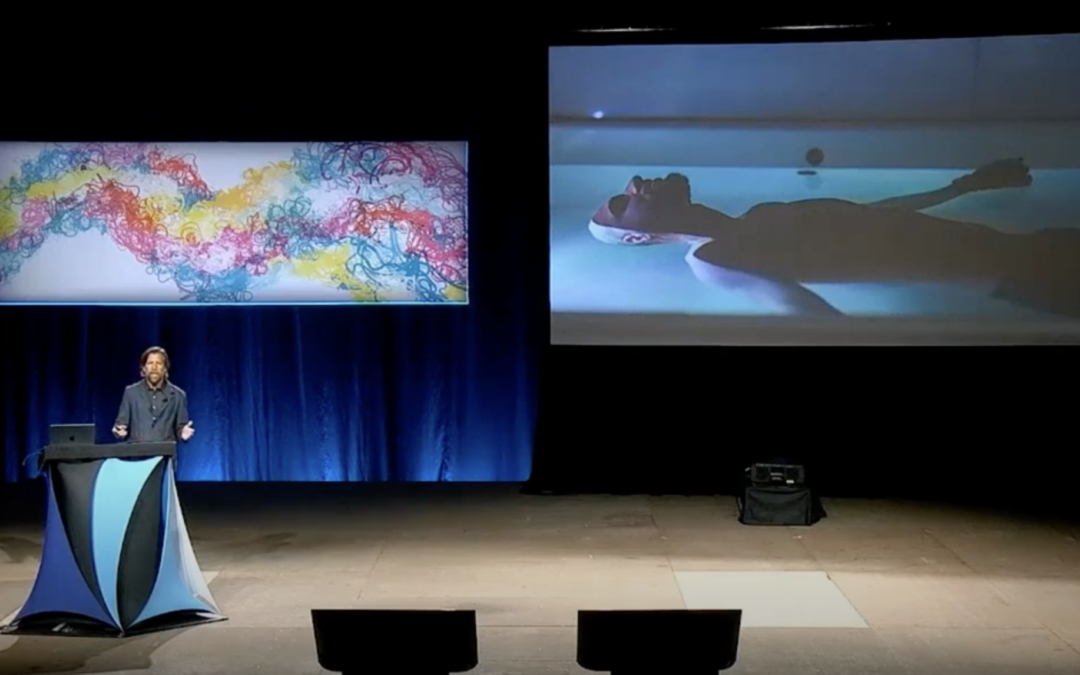James Nestor is a highly regarded author, journalist, and speaker, whose groundbreaking work has provided new insights into the importance of breath. He first explored the depths of human physiology in his book ‘Deep’ and later delved into the forgotten art and science of breathing in ‘Breath: The New Science of a Lost Art’.
Nestor has been a familiar presence on the Float Conference stage, making his third appearance in 2022. During this talk, he discussed the fascinating connection between breath and floating, combining his expertise in both fields. The Float Conference, an annual gathering of enthusiasts, researchers, and floatation tank owners, has been an ideal platform for Nestor’s unique explorations.
In his earlier presentations, Nestor connected the mammalian dive reflex, magnetoreception, and floating, highlighting the parallels between these phenomena. He also discussed the evolution of human facial structures and breathing patterns in relation to floating.
 During his most recent appearance, Nestor presented an intriguing exploration of the profound impact of floating on our breathing rate and depth. He discovered significant similarities between the benefits of slow, conscious breathing and those of floating, such as relaxation of the nervous system, improved immune function, reduced blood pressure, relief from anxiety disorders, pain management, and enhanced physical recovery.
During his most recent appearance, Nestor presented an intriguing exploration of the profound impact of floating on our breathing rate and depth. He discovered significant similarities between the benefits of slow, conscious breathing and those of floating, such as relaxation of the nervous system, improved immune function, reduced blood pressure, relief from anxiety disorders, pain management, and enhanced physical recovery.
Nestor emphasized the role of posture in breathing, drawing inspiration from various sources, including ICU practices for COVID patients and ancient art depicting the restful pose of the Buddha. He proposed that the lack of resistance while floating on our backs encourages deeper, more comfortable breaths.
Additionally, Nestor discussed the extensive effects of slow breathing on heart rate, blood pressure, and brain function, suggesting that conscious breathing can enhance the floatation experience. He shared a simple practice for exploring this connection in the float tank called coherent breathing, where one breathes rhythmically with a count of five to six on the inhale and exhale, promoting deep relaxation.
Nestor’s work beautifully combines the concepts of breath and water, revealing how slow breathing can enhance the floating experience. His journey from exploring oceanic depths to the tranquility of a float tank helps us appreciate how simple, natural processes can lead to profound wellness benefits.
If you are intrigued by Nestor’s ideas, make sure to watch his talks at the Float Conference or explore his books, which offer delightful and enlightening reads. If you’re inspired, you might even consider attending this year’s Float Conference in Louisville, Kentucky, which is also available for virtual participation. Rest assured, there will be more fantastic science and information shared from the various presentations in the upcoming months.



Recent Comments